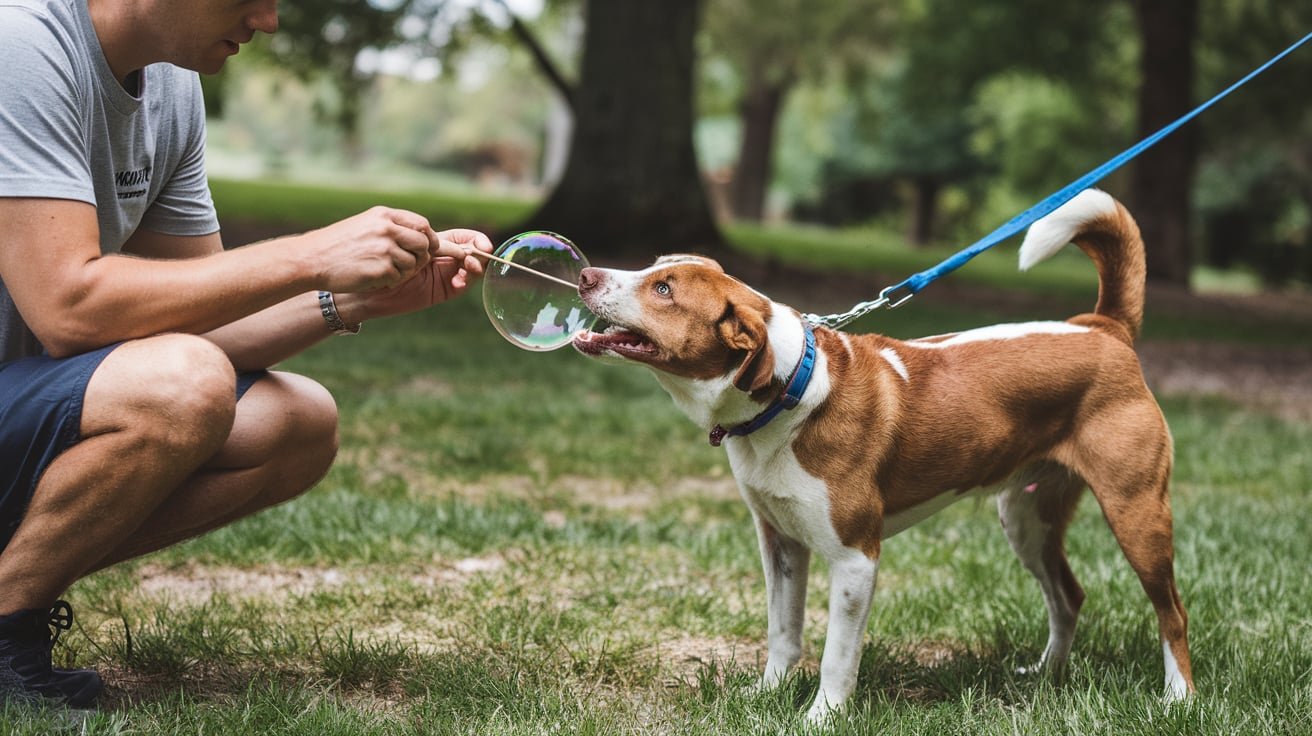What are signs of a happy dog? Owning a dog brings incredible joy, but every pet parent wants to know, is my dog truly happy? Dogs can’t tell us how they’re feeling in words, so understanding their body language, behavior, and habits is key. This guide will help you recognize the signs of a happy dog, so you can feel confident that your furry friend is thriving.
Why Is It Important to Recognize Signs of Happiness in Dogs?
Before diving into the signs, let’s understand why knowing your dog’s happiness matters. Just like humans, dogs need a balance of mental, physical, and emotional well-being. When we know they’re content, we can continue to support the lifestyle that keeps them that way. And if they’re unhappy, we can make changes to ensure they’re living their best life.
Signs of a Happy Dog: What to Look For
1. Relaxed Body Language
One of the clearest indicators of a dog’s happiness is relaxed body language. A happy dog is loose and relaxed, with a calm demeanor.
Examples:
- Soft eyes: Your dog’s eyes look gentle and relaxed, with no visible tension around them. They might even blink slowly or squint slightly, showing that they feel comfortable.
- Relaxed ears: In a happy dog, the ears rest naturally or are slightly forward. They’re not pulled back or pinned down.
2. A Wagging Tail
We’ve all heard that a wagging tail means a dog is happy. However, not all wags are the same, so it’s essential to look at the type of wag your dog displays. A happy dog will have a loose, rhythmic wag, often with the tail positioned at mid-level or higher.
Anecdote: Emma, a dog owner from Brighton, noticed her dog’s tail was always low or stiff when she first adopted him. After settling in, she saw that “happy wag” as he started feeling more at home – a sure sign he felt content.
3. Playful Behavior
Happiness in dogs often reveals itself through playfulness. Happy dogs are eager to play, whether it’s with you, another dog, or a toy. They may initiate play by bringing you a toy, pawing at you, or doing a “play bow” (front legs down, rear end up).
Tip: If your dog loves playing fetch or tug-of-war, incorporate those games into your daily routine. Regular play not only keeps them happy but strengthens your bond!
4. Good Appetite and Enjoyment of Meals
Happy dogs generally have a good appetite and show enthusiasm at mealtime. If your dog eats eagerly and is interested in food or treats, it’s a great sign they’re feeling good.
Resource: Dog Feeding Guide – For help on creating a balanced meal plan to keep your dog healthy and happy.
5. Shows Affection Freely
If your dog leans on you, cuddles up, or follows you around, it’s a strong indication of their trust and affection – a sign of happiness. Dogs are social animals, and happy dogs enjoy being close to those they love.
How to Keep Your Dog Happy: Tips for UK Dog Owners
Routine and Predictability
Dogs thrive on routine, and having a predictable schedule for feeding, walks, and playtime makes them feel safe and secure.
Tip: Set regular walk times and feeding hours, and stick to them as closely as possible. It’ll build a sense of stability for your pet.
Provide Mental Stimulation
Boredom can lead to anxiety or destructive behavior, so keeping your dog mentally stimulated is crucial. Introduce puzzles, training exercises, or new tricks regularly.
Resource: Enrichment Activities for Dogs – RSPCA offers tips on mental enrichment for dogs to keep their minds active and engaged.
Regular Exercise
Most dogs need daily physical activity to be content, so find activities that suit your dog’s breed and energy level. Even a short walk through the countryside or a romp in the park can make a big difference.
Anecdote: Liam from Yorkshire found that his dog, Bailey, was much calmer and happier after he introduced short runs in the local park. It quickly became Bailey’s favorite activity, and his contentment showed.
Signs Your Dog May Need More Support
While we’re focusing on signs of happiness, it’s also essential to recognize signs of distress in your dog. If you notice any of these, it might mean your dog needs some extra support:
- Loss of appetite
- Withdrawn behavior
- Increased barking or whining
- Restlessness or destructive behavior
For any prolonged changes in behavior, consult with your vet or a dog behaviorist. Early intervention can make a huge difference in supporting your dog’s well-being.
Final Thoughts: Recognizing and Supporting a Happy Dog
Seeing your dog happy is one of the most rewarding aspects of pet ownership. By paying attention to your dog’s body language, routine, and overall behavior, you can quickly pick up on what makes them happy – and keep them that way.
Ready to learn more about how to care for your dog? Check out our full guide on Dog Care Tips from The Kennel Club UK to ensure you’re doing everything you can to support a joyful, healthy life for your furry friend.
Hyper Links:
- How To Adopt a Dog From Human Society
- How to adopt A dog From A shelter
- What Is Chicken Meal In Dog Food
- When Does A dog Stop Growing
- What is The Easiest Dog Breed To Train
- How Long Can Dogs Go Without Food
- Is Pedigree A Good Dog Food
- Can Abused Dogs Be Trained
- Why Is It Funny To give Dogs Peanut Butter



